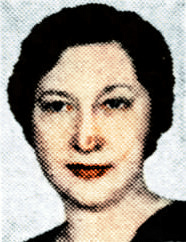New helicopter also flies sideways and backwards
By Walker Stone, Scripps-Howard staff writer
Wright Field, Dayton, Ohio –
Army Air Force officers in the laboratory center here demonstrated a Sikorsky helicopter which flies backwards or sideways, as well as forward, hovers motionless over a spot and comes to rest in little more space than required to park an automobile.
It is an experimental model which has met the Army’s requirements, the result of years of laboratory work. Sikorsky is seeking to prove its usefulness for “finding subs and sinking same,” artillery observation, liaison in combat, and rescue missions.
The Navy has not yet taken to the idea of sending helicopters on merchant convoys, to drop bombs or “ashcan” depth charges on enemy submarines.
6,400 rounds a minute
There are hundreds of other innovations and improvements in air fighting equipment, which have been exhibited for the first time to a group of newspapermen on a tour of inspection here. Some are improvements and gadgets “dreamed up” three and four years ago, now in production. Some are just off the drafting boards, and can’t be written about for the same reason that the enemy doesn’t disclose his secrets.
But officers here, who believe they are thinking and drafting faster than the enemy, proudly demonstrate a fighter plane firing at the rate of 6,400 rounds per minute from eight .50-caliber guns.
They exhibit the type of bomber in which Maj. Jimmy Doolittle led the raid on Tokyo; the type of 400-miles-per-hour pursuit ship in which Lt. Col. Elliott Roosevelt is flying at low altitudes to photograph enemy replacements; a rubber raft like the one on which Capt. Eddie Rickenbacker and his men floated for so many days on the Pacific.
Propellers as weapons
Showing how little things add to fighting efficiency, they point out a newly-perfected brush for a generator. The old brush wore out in two hours flying at 30,000 feet altitude, putting the guns, turrets, etc., out of commission. The new one is good for 100 hours.
They show a compact radio set with which, flying over Wright Field, they were able to talk with our air forces at besieged Bataan.
They talk of the merits of their hollow-steel propellers, so tough that Russians over Moscow or Stalingrad could fly into and chew up the tail of an enemy plane more surely than they could shoot it down.
In some matters, the High Command has not been as alert as his laboratory experts. Shortly after World War I, Wright Field technicians were experimenting with bulletproof and self-sealing gasoline tanks. It was well-known four or five years ago that the Germans had such in the fighting planes. But a placard on the wall in the laboratory here bears a photostat of an order from Washington dated Jan. 3, 1940, directing the Materiel Center Laboratory to perfect self-sealing tanks. In six months, the tanks were in production. By then, the Battle of Britain was well underway.
All-seeing cameras developed by war
Dayton, Ohio (UP) –
Pressure of two years of warfare has brought about optical and photographic developments which otherwise might have required for 100 years, Col. George W. Goddard, director of the photographic research laboratory at Wright Field, said today. Col. Goddard told visiting newspapermen that night photographs, showing details as clearly as those made in daylight, and infrared photographs, which unmask the cleverest camouflage, were examples of advances made in military photography.
Some of the greatest progress, the colonel indicated, has been made in the field of reconnaissance photography from high altitudes, where observation planes are out of range of enemy ack-ack.
He described a spherical plate camera, for example, which is capable of recording all of Berlin in one exposure. The same camera, he said, could photograph a 400-square-mile area from an altitude of 30,000 feet.
Other photographic marvels included:
A 40-inch telephoto lens which will define railroad ties on a sensitive plate exposed at the 30,000-foot flying level.
The K-18 camera which takes a series of consecutive pictures and can, from a height of 30,000 feet, record 1,600 square miles at one loading.
The K-17 camera arranged to take three exposures simultaneously – one straight down, one to the right and one to the left, thus recording a strip of enemy territory from horizon to horizon.

